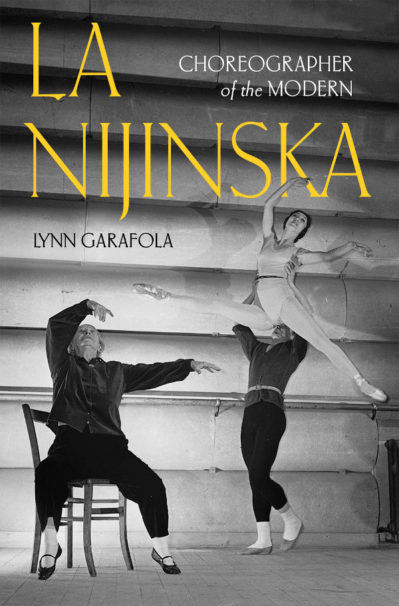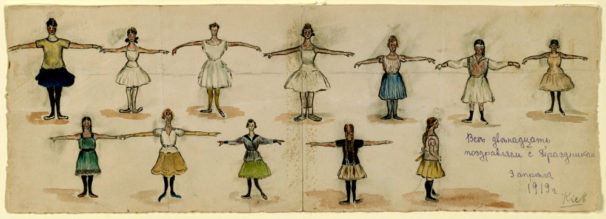
ed. note: We are nearly paralyzed with concern for Ukraine, which has played such a vital role in dance and the arts, and is now under Russian attack. Giving us courage is a reminiscence of the deep connection felt by choreographer Bronislava Nijinska, a tale shared with artsmeme readers by Lynn Garafola, Nijinska’s biographer.
As bombs again fall over Kyiv, I send warm wishes to the people there who have shared their thoughts and research about Nijinska. I wish them well and hope that hostilities cease sooner rather than later.

Nijinska spent several years in Kyiv (or Kiev, as she always called the city) between 1915 and 1921. She danced at today’s Taras Shevchenko National Academic Opera and Ballet Theatre of Ukraine, when it was called the Kyiv City Theater, and founded her School of Movement within a few blocks of it. After a break spent in Moscow around the time of the Revolution, Nijinska returned to Kyiv. It was by then an independent nation, a multinational republic with four official languages — Russian, Ukrainian, Polish, and Yiddish — and a flourishing art and theatrical scene. In the years that followed the government changed a score of times — Germans, Poles, Reds, Whites advanced and retreated bombing the city: one of those bombardments permanently impaired Nijinska’s hearing. In the end the Reds — the Bolsheviks — won out. Nijinska left in 1921, and for a time yearned to go back. But there was almost nothing to eat, and her friends told her to stay in the West. Nijinska left a little part of herself in Kyiv when she emigrated. She sometimes referred to the city in interviews and in the very last years of her life reconnected with some of her former students who had moved to Moscow and become artists.

Our two images here include a photograph of Nijinska’s first husband, Alexander Kochetovsky, and (to his right) her dear friend, the opera singer Nina Moiseevna standing by a side entrance to the City Theater (it looks exactly the same today). The second image is a holiday greeting to Nijinska from her first group of students at the School of Movement.
Lynn Garafola is a Professor Emerita of Dance, Barnard College, Columbia University, and the author of La Nijinska: Choreography of the Modern, published by Oxford University Press.
